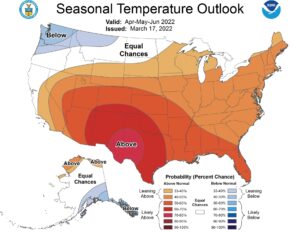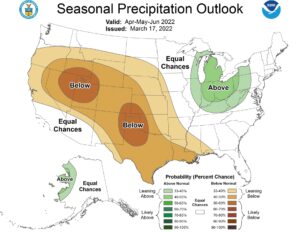This past winter has been mild across Indiana. With the second La Niña winter in a row, there were expectations that the season would start of mild with some hope that winter would come back fiercely in February and March. While most of the season’s snowfall happened in February, it still was not enough to make up for the lack of snow in December and January. Figure 1 shows this winter’s temperature departure from normal through March 15th. While the northern part of the state was near normal, southern Indiana’s temperatures averaged slightly above normal. A similar north-south separation occurred regarding precipitation over that same period where southern Indiana received well above the climatological normal amounts and northern Indiana was near normal (Figure 2). Considering the winter’s precipitation climatology alongside the snowfall climatology (Figure 3), one can see that Indiana is well behind the typical amount of winter-season snowfall and yet the state is still very wet. This is unfortunate when translated to more runoff, soil erosion, and nutrient depletion. While there is still significant potential for several more days below freezing and possibly a snowfall event here and there, the current climate outlooks are not favoring winter-like conditions to last much longer.
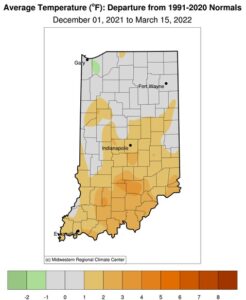
Figure 1. Average temperature departure (in degrees Fahrenheit)from the 1991-2020 normals for the winter period of December 1, 2021 through March 15, 2022.
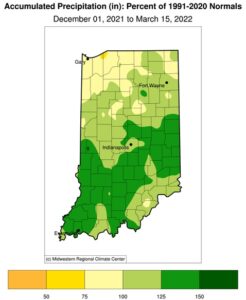
Figure 2. December 1, 2021 through March 15, 2022 precipitation represented as the percent of the average precipitation amount of the same time period from 1991-2020.
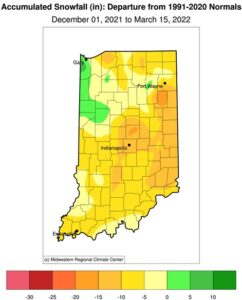
Figure 3. Average snowfall departure (in inches) from the 1991-2020 normals for the winter period of December 1, 2021 through March 15, 2022.
Over the last several months, climate models were predicting the La Niña conditions in the equatorial Pacific Ocean to start transitioning to the “neutral” phase of this teleconnection event (Note, there are 3 phases to the El Niño – Southern Oscillation (ENSO) phenomena: El Niño (warm phase); neutral; La Niña (cool phase)). However, this La Niña phase has been more persistent than predicted and will likely continue for a few more months. What this means for Indiana is higher confidence in above-normal temperatures and above-normal precipitation. The national Climate Prediction Center’s three-month outlook for the April-May-June period is favoring confidence that the period’s average temperature will be above normal with above-normal amounts of precipitation (Figures 4 and 5). The warmer temperatures will likely encourage perennials to leave dormancy soon enough to hopefully help absorb some of the excess precipitation. Additionally, warmer temperatures will encourage more evapotranspiration to further offset above-normal precipitation amounts.
